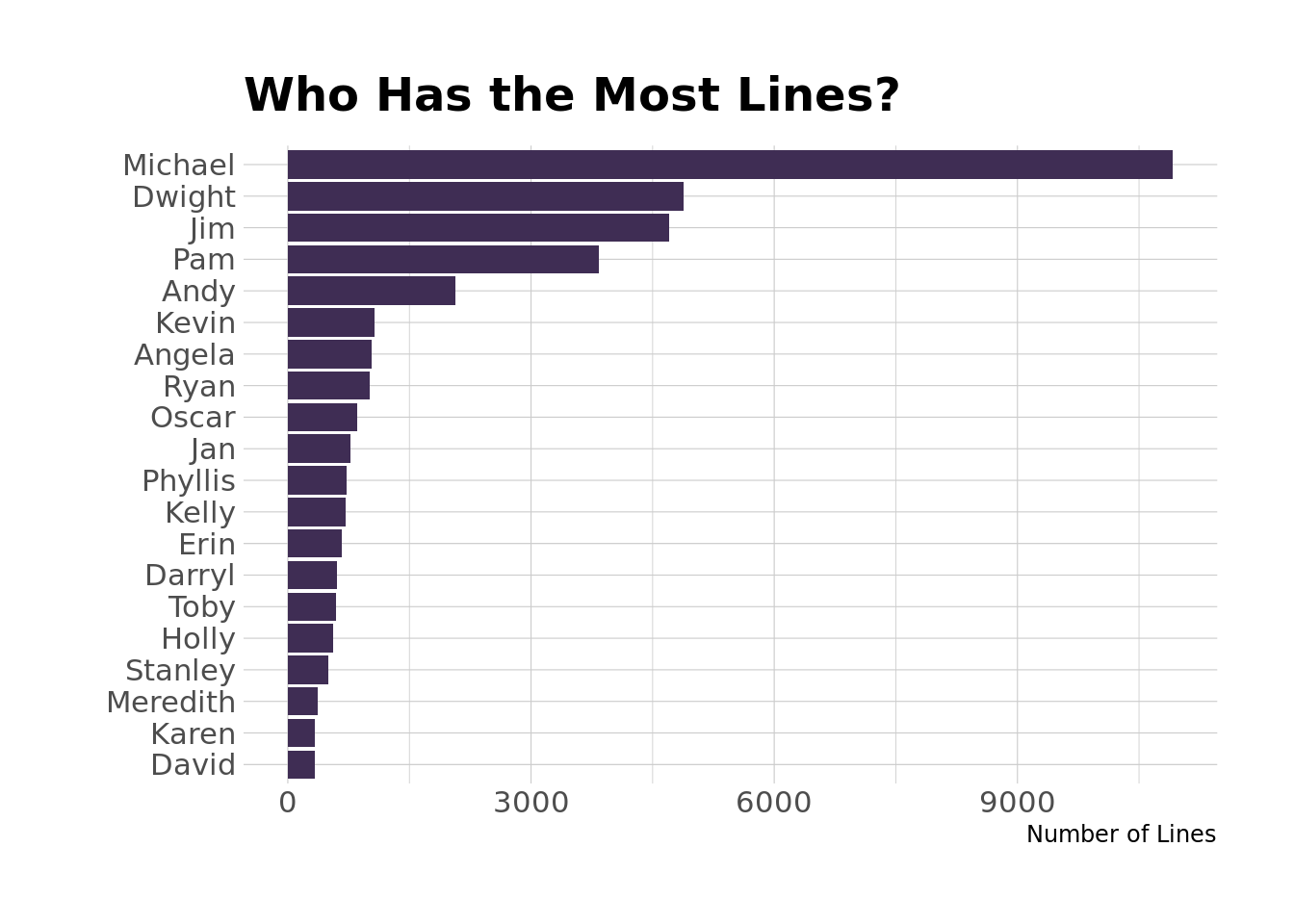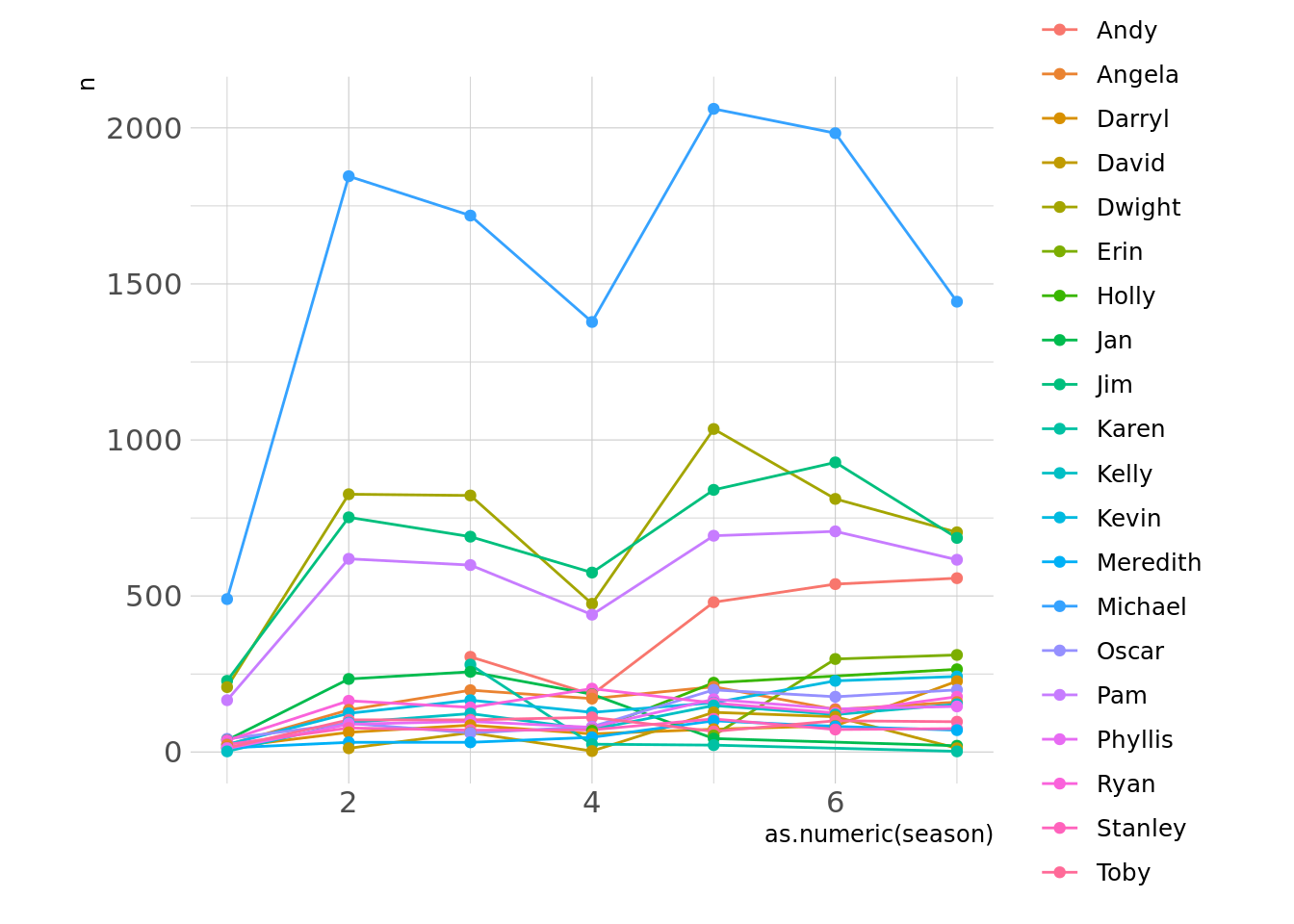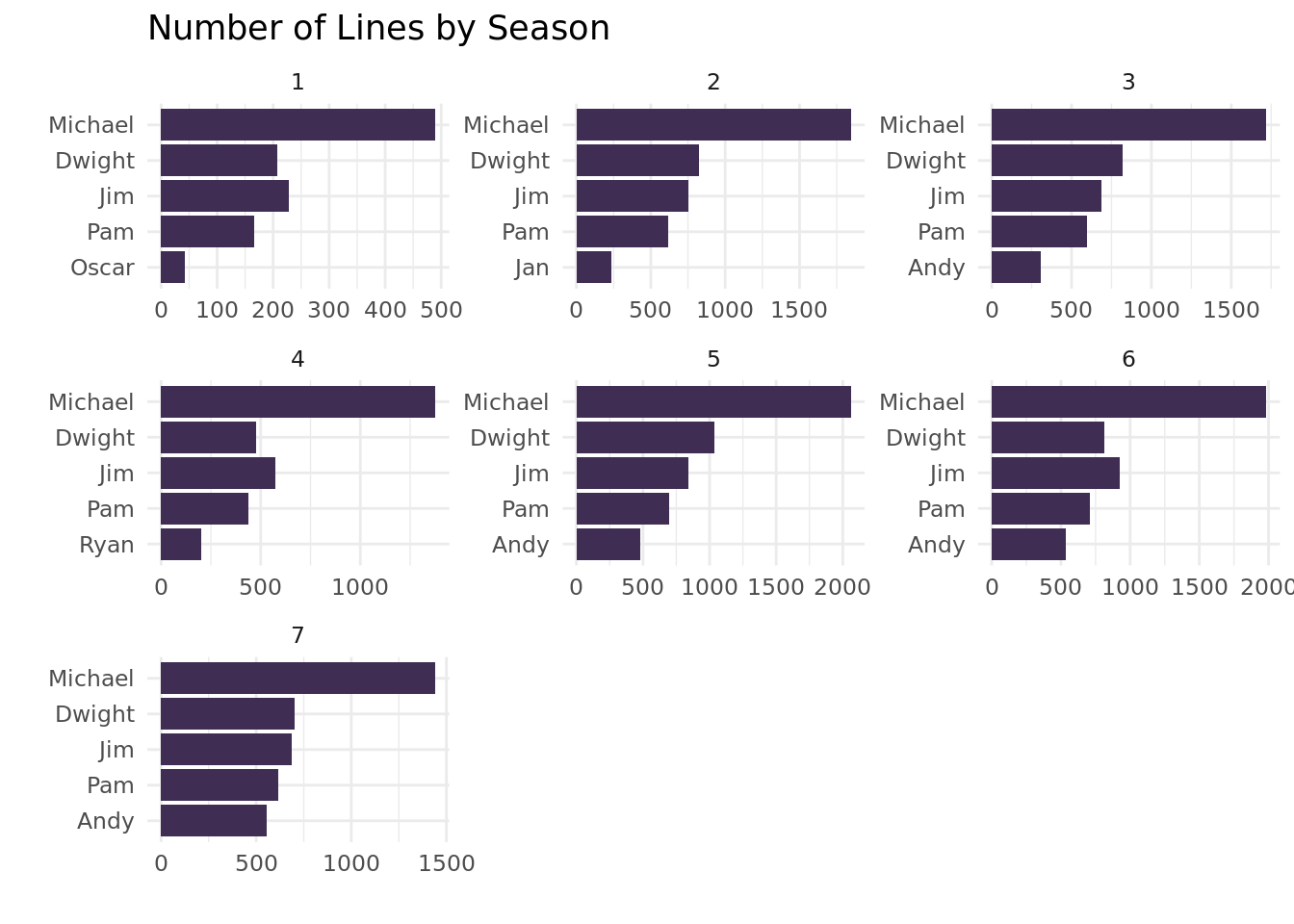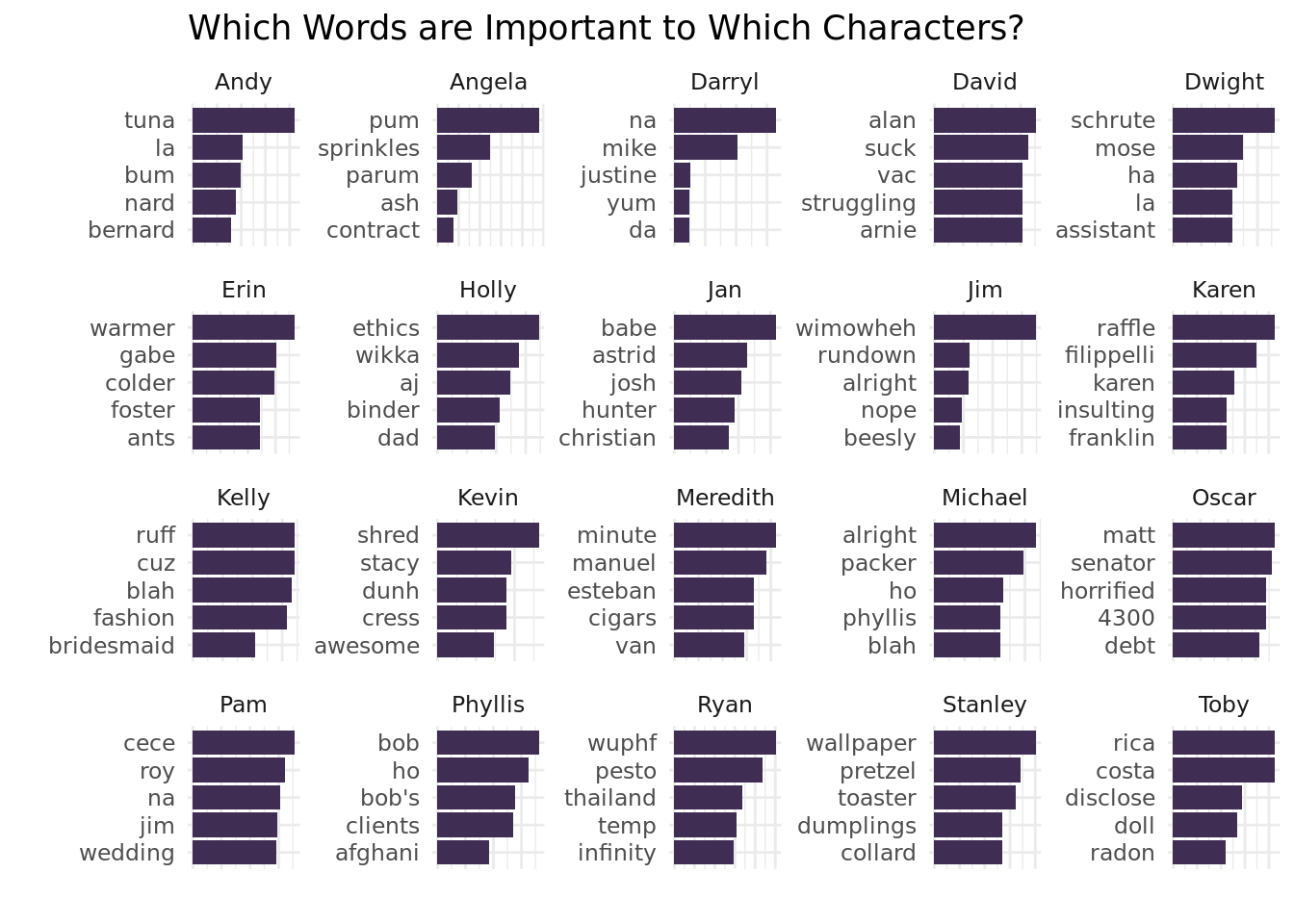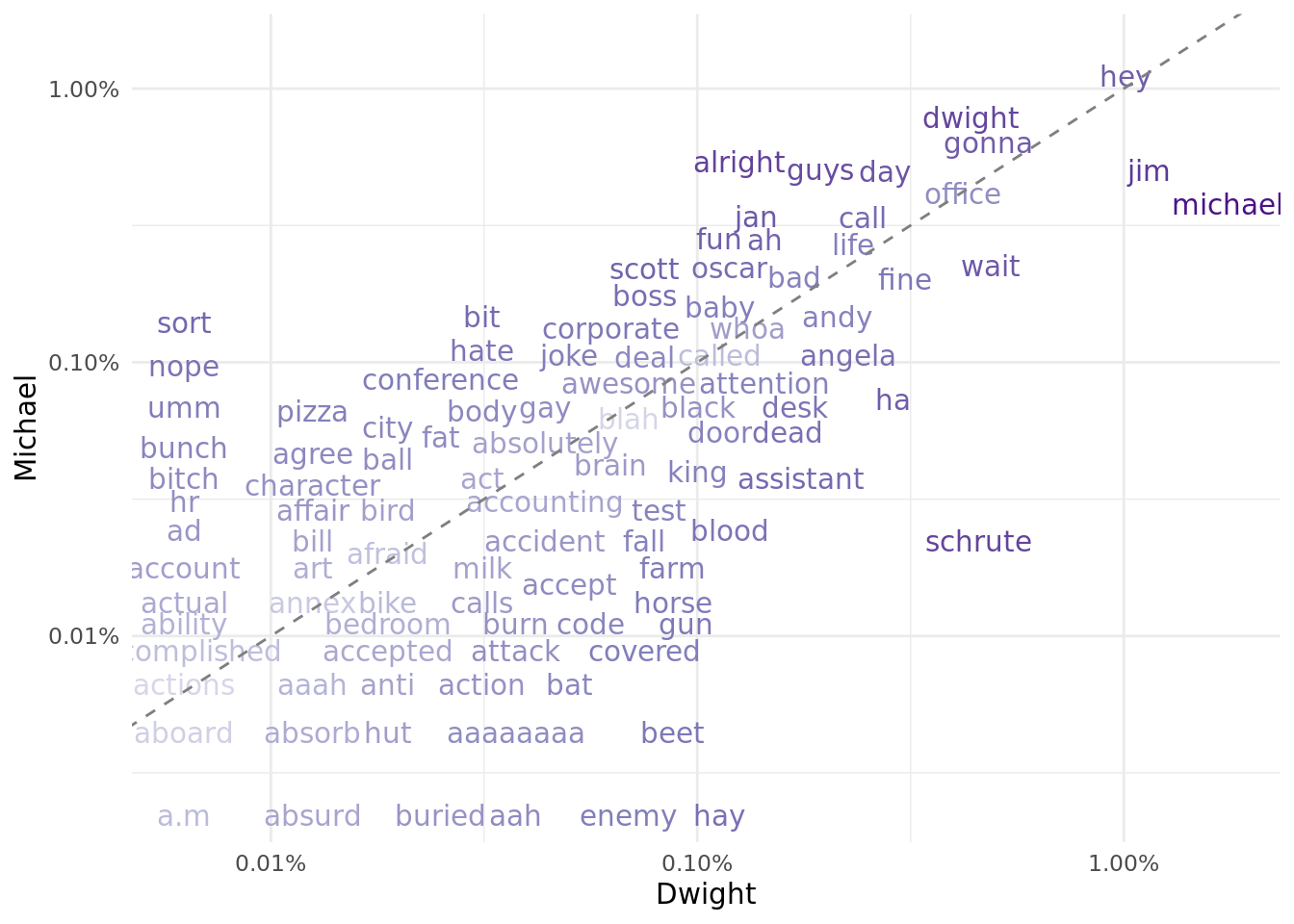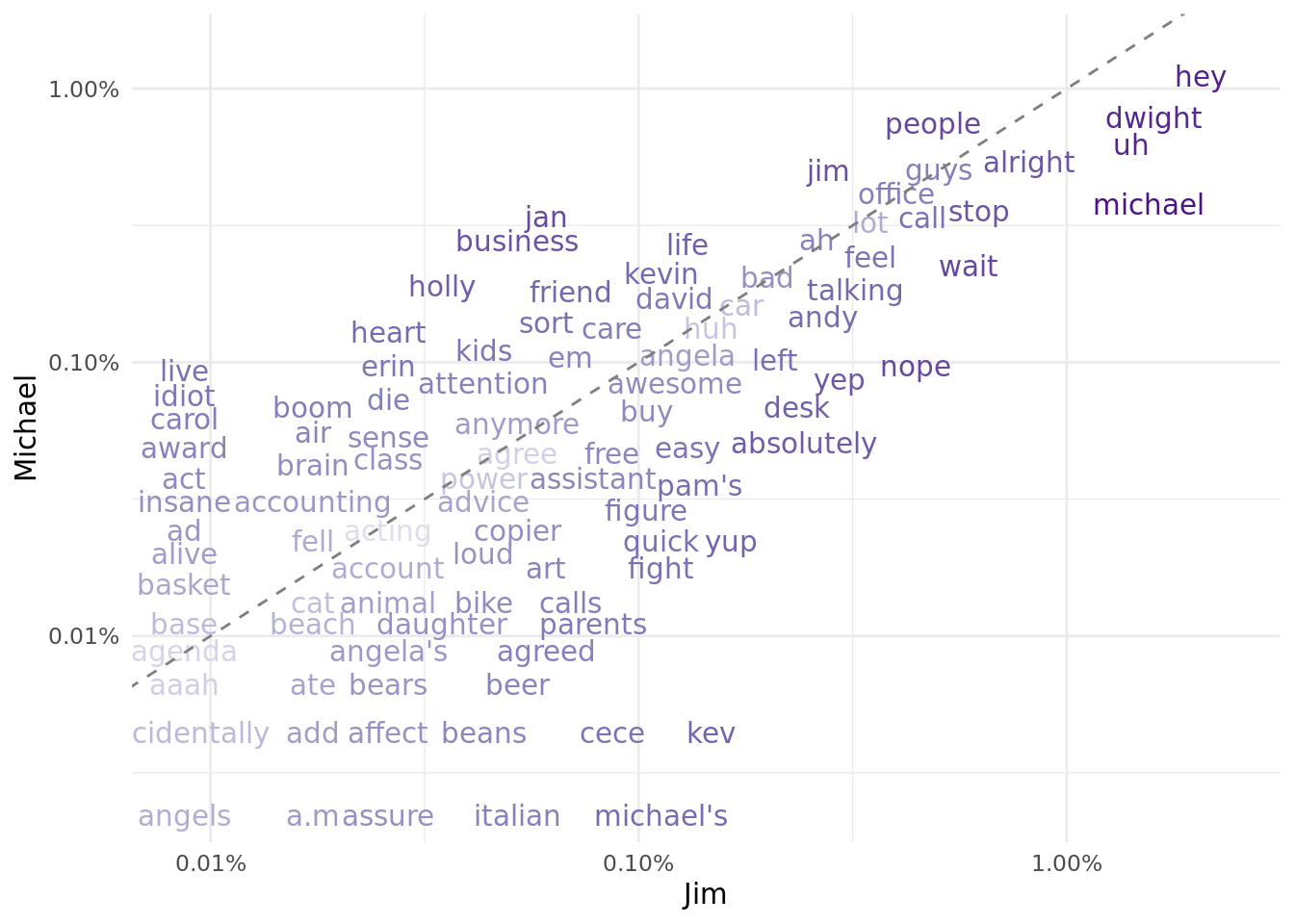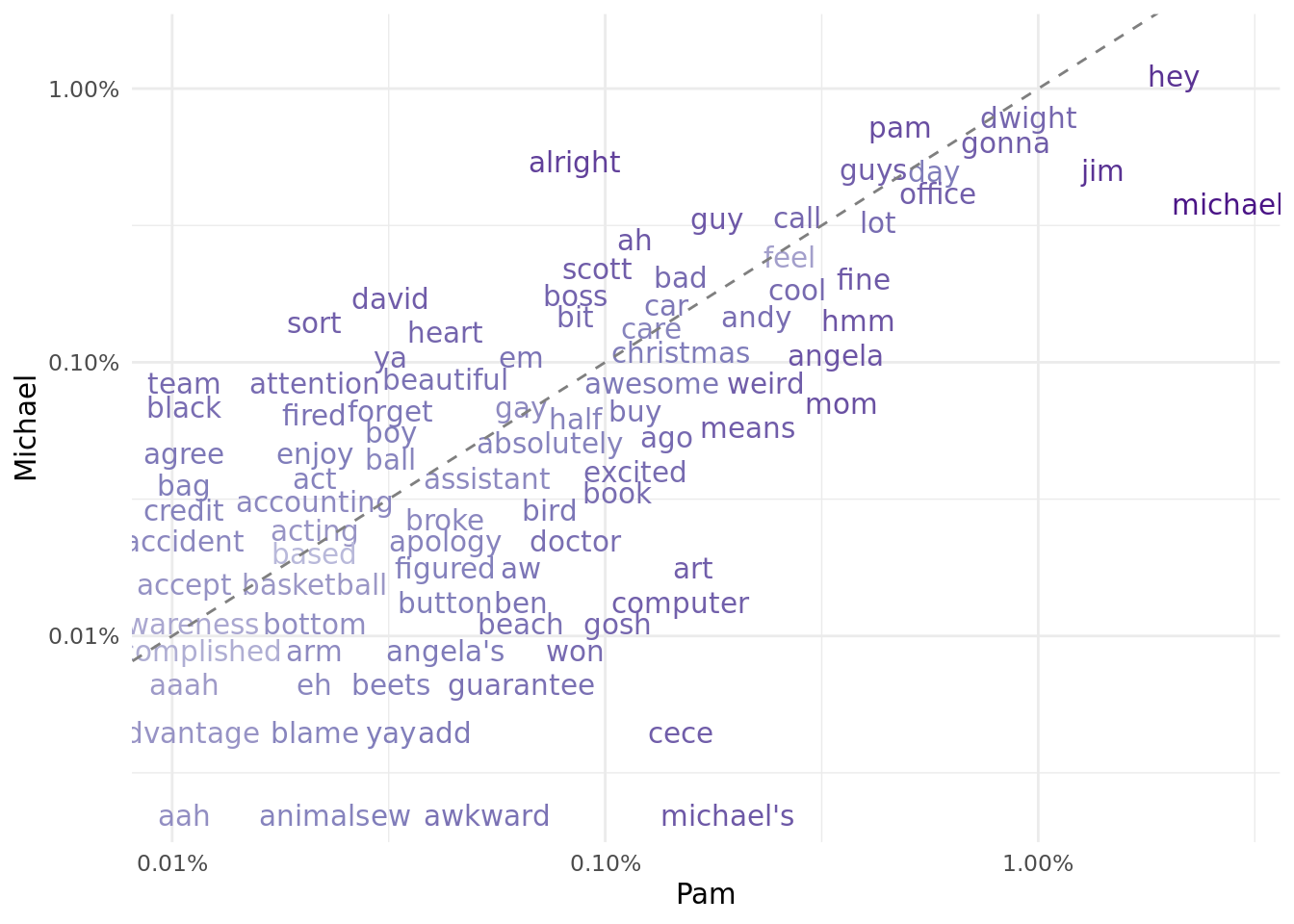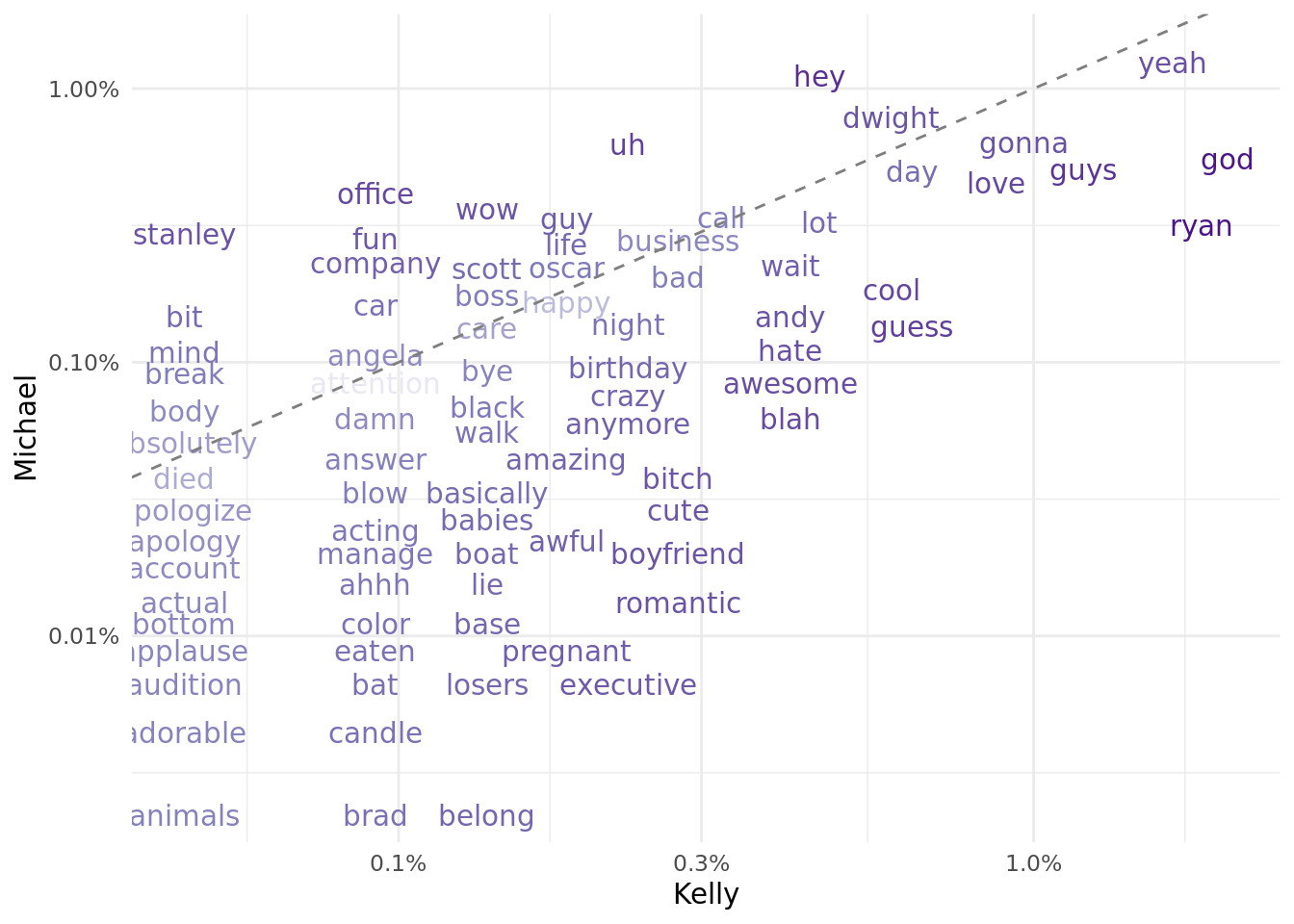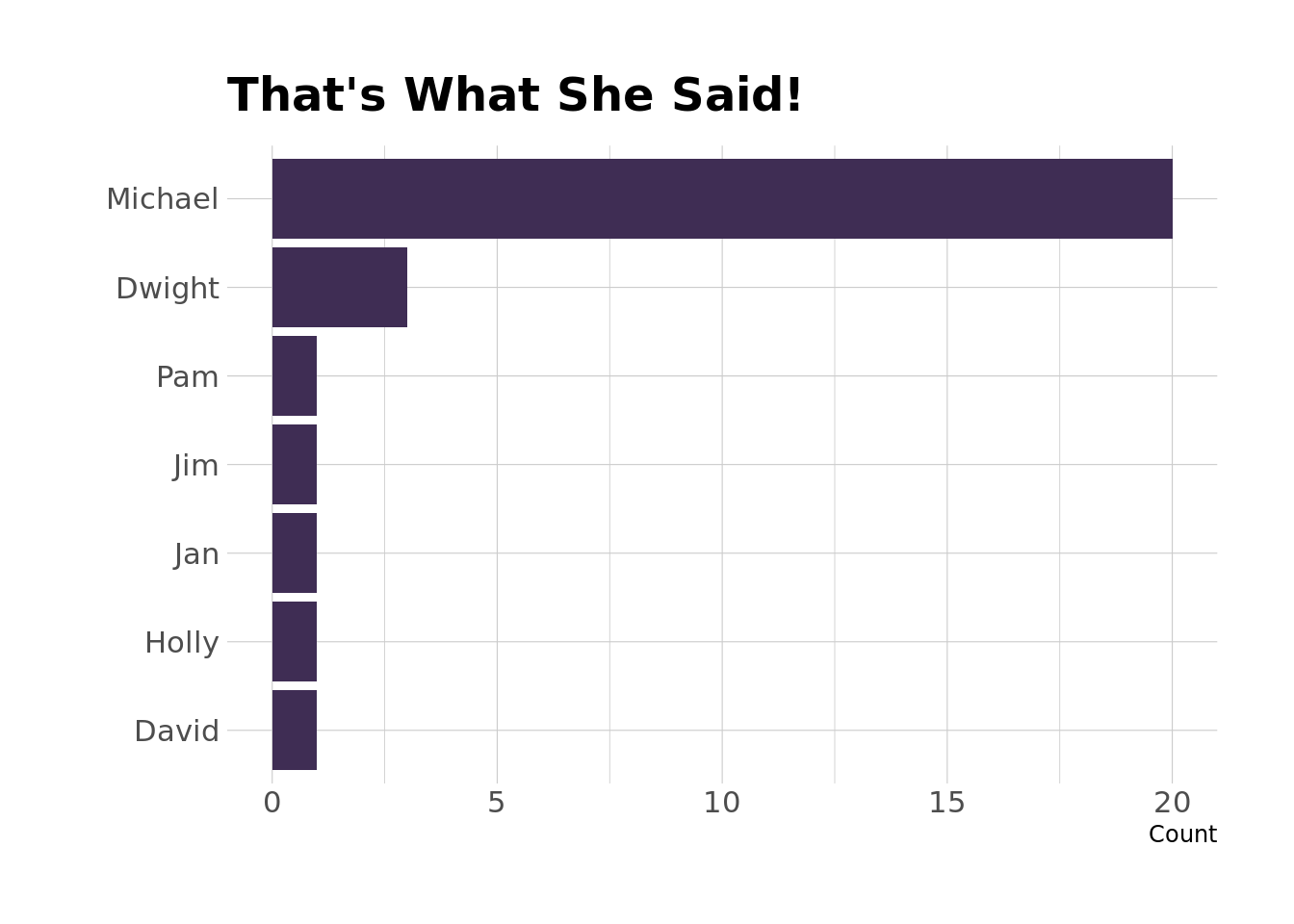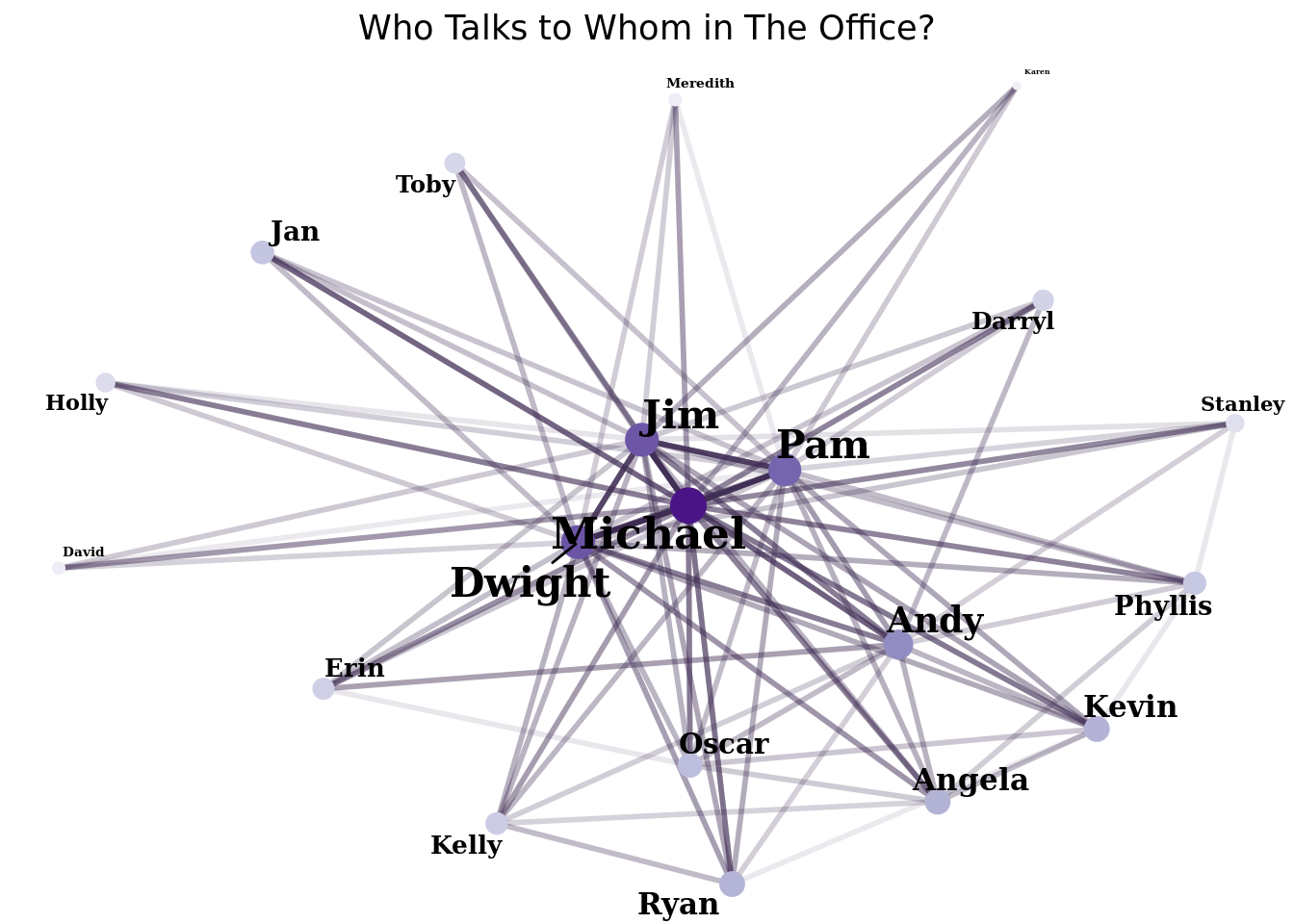Rows: 125,040
Columns: 12
$ index <int> 1, 1, 1, 2, 2, 3, 3, 3, 4, 4, 6, 6, 6, 6, 6, 6, 6, 6,…
$ season <int> 1, 1, 1, 1, 1, 1, 1, 1, 1, 1, 1, 1, 1, 1, 1, 1, 1, 1,…
$ episode <int> 1, 1, 1, 1, 1, 1, 1, 1, 1, 1, 1, 1, 1, 1, 1, 1, 1, 1,…
$ episode_name <chr> "Pilot", "Pilot", "Pilot", "Pilot", "Pilot", "Pilot",…
$ director <chr> "Ken Kwapis", "Ken Kwapis", "Ken Kwapis", "Ken Kwapis…
$ writer <chr> "Ricky Gervais;Stephen Merchant;Greg Daniels", "Ricky…
$ character <chr> "Michael", "Michael", "Michael", "Jim", "Jim", "Micha…
$ text_w_direction <chr> "All right Jim. Your quarterlies look very good. How …
$ imdb_rating <dbl> 7.6, 7.6, 7.6, 7.6, 7.6, 7.6, 7.6, 7.6, 7.6, 7.6, 7.6…
$ total_votes <int> 3706, 3706, 3706, 3706, 3706, 3706, 3706, 3706, 3706,…
$ air_date <fct> 2005-03-24, 2005-03-24, 2005-03-24, 2005-03-24, 2005-…
$ word <chr> "jim", "quarterlies", "library", "told", "close", "ma…

